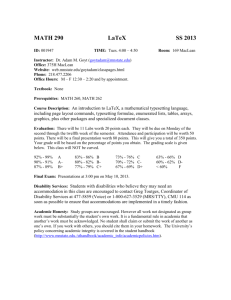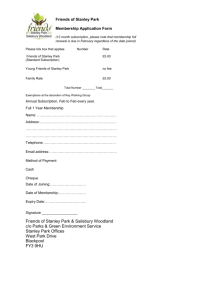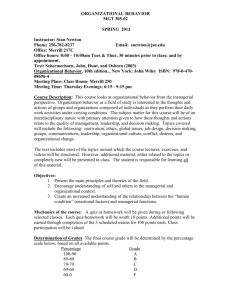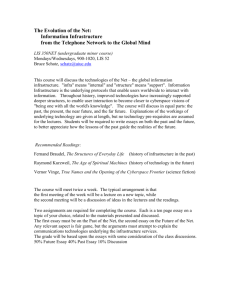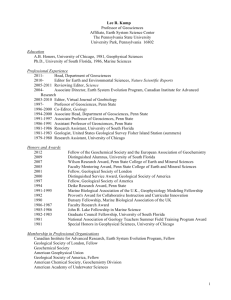EPS/OEB 56: Geobiology and the History of Life
advertisement
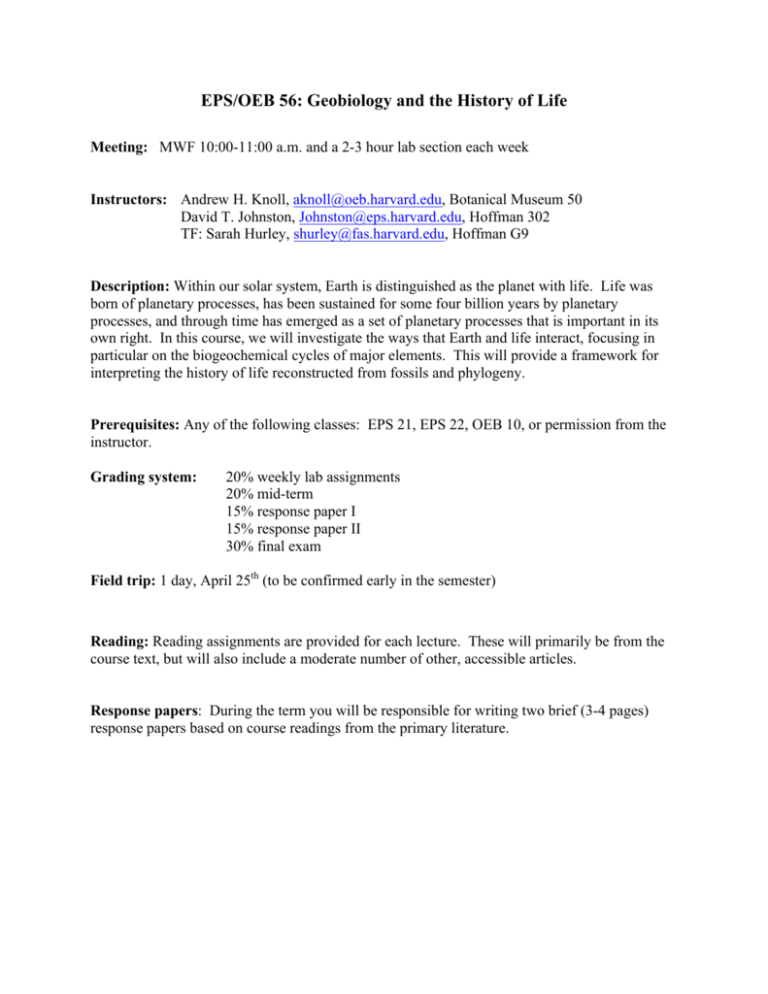
EPS/OEB 56: Geobiology and the History of Life Meeting: MWF 10:00-11:00 a.m. and a 2-3 hour lab section each week Instructors: Andrew H. Knoll, aknoll@oeb.harvard.edu, Botanical Museum 50 David T. Johnston, Johnston@eps.harvard.edu, Hoffman 302 TF: Sarah Hurley, shurley@fas.harvard.edu, Hoffman G9 Description: Within our solar system, Earth is distinguished as the planet with life. Life was born of planetary processes, has been sustained for some four billion years by planetary processes, and through time has emerged as a set of planetary processes that is important in its own right. In this course, we will investigate the ways that Earth and life interact, focusing in particular on the biogeochemical cycles of major elements. This will provide a framework for interpreting the history of life reconstructed from fossils and phylogeny. Prerequisites: Any of the following classes: EPS 21, EPS 22, OEB 10, or permission from the instructor. Grading system: 20% weekly lab assignments 20% mid-term 15% response paper I 15% response paper II 30% final exam Field trip: 1 day, April 25th (to be confirmed early in the semester) Reading: Reading assignments are provided for each lecture. These will primarily be from the course text, but will also include a moderate number of other, accessible articles. Response papers: During the term you will be responsible for writing two brief (3-4 pages) response papers based on course readings from the primary literature. Lecture and Lab schedule M Jan 26: W Jan 28: F Jan 30: Introduction (AK, DJ) Uniformitarianism: processes and rates (AK) Today’s world – the atmosphere (DJ) (Kump, reserve book, Ch 3) No lab this week. M Feb 2: W Feb 4: F Feb 6: Today’s world: the ocean and underlying sediments (DJ) Today’s world: phylogeny and biological diversity (AK) The record of life in sedimentary rocks (AK) (Stanley Ch. 1; Virgilli, 2007) LAB 1: the rock cycle (Stanley Ch. 2) M Feb 9: W Feb 11: F Feb 13: The record of physical environments in sedimentary rocks (AK) Time and stratigraphy (AK) (Stanley Ch. 6) The Earth: Origin and Early Evolution (DJ) (Hazen and Ferry, 2010) LAB 2: The nature of sedimentary rocks and sedimentary structures (Stanley Ch. 5) M Feb 16: W Feb 18: F Feb 20: Holiday (Presidents’ Day) The Archean Earth System (DJ) (Stanley Ch. 11) The Origin of Life (AK) (Ricardo and Szostak, 2009) LAB 3: More on sedimentary rocks M Feb 23 W Feb 25 F Feb 27 The Great Oxidation Event I (DJ) (Kump, 2008; Stanley Ch. 12) Eukaryotic radiation (AK) (see Stanley Ch. 1 again) Proterozoic life and environments (AK) (Poulton and Canfield, 2011) LAB 4: Stromatolites and microfossils: The fossil record of early life M Mar 2 W Mar 4 F Mar 6 Neoproterozoic ice ages (DJ) (Hoffman, 2009) Revisiting the linkage between different geochemical cycles (DJ) Ediacaran environmental history (DJ) LAB 5: Review Session M Mar 9 W Mar 11 F Mar 13 MID-TERM EXAM The dawn of animal life (AK) (Xiao and LaFlamme, 2008) The Cambrian radiation of animals I (AK) (Stanley Ch. 13; Dove, 2010) LAB 6: The great oxidation event and redox SPRING BREAK M Mar 23 W Mar 25 F Mar 27 The Cambrian radiation of animals II (AK) (Stanley Ch. 13; Dove, 2010) Biogeochemical consequences of animal radiation (DJ) Paleozoic environments (DJ) (Stanley Ch. 14) LAB 7: The nature of animal fossils M Mar 30 W Apr 1 F Apr 3 Ordovician radiation in the oceans (AK) Paleozoic marine life and extinctions (AK) Plants and animals colonize land (AK) LAB 8: Paleozoic animals in the oceans M Apr 6 W Apr 8 F Apr 10 End-Permian mass extinction (AK) The Triassic recovery (AK) Oceanic anoxic events (DJ) LAB 9: The fossil record of land plants M Apr 13 W Apr 15 F Apr 17 The Mesozoic marine revolution of animals (AK) (Stanley Ch. 15, 16) The Mesozoic marine revolution of plankton (AK) (Takashima et al., 2006) End-Cretaceous mass extinction (AK) LAB 10: Mesozoic and Cenozoic animals in the oceans M Apr 20 W Apr 22 F Apr 24 Cenozoic climate change (DJ) (Stanley Ch. 18, 19) The Pleistocene ice age (DJ) Evolution in the context of Cenozoic climate change and anthropocene (AK) LAB 11: Field trip preparation APRIL 25th Field trip to upstate NY. M Apr 27 W Apr 29 Anthropocene climate and what is to come (DJ) Reflecting on comparisons between the early Earth and today (DJ) READINGS Textbook: Stanley, S.M. and J.A. Luczac (2014) Earth System History, 4rd Edition. W. H. Freeman, ISBN-13: 978-1429255264. On reserve at Cabot: Selected readings from Kump. L.R., J.F. Kasting and R.G. Crane (2008) The Earth System (3rd Edition).Prentice Hall, 432 pp. ISBN-13: 978-0321597793 Additional Readings: Dove, P.M. (2010) The rise of skeletal biominerals. Elements 6: 37-42. Hazen, R.M. and J.M. Ferry (2010) Mineral evolution: mineralogy in the fourth dimension. Elements 6: 9-12. Hoffman, P.F. (2009) Neoproterozoic glaciation. Geology Today 25: 107-114. Kump, L.R. (2008) The Rise of atmospheric Oxygen. Nature: 277-278. Poulton, S.W. and D.E. Canfield (2011) Ferruginous conditions: a dominant feature of the ocean through Earth's history. Elements 7: 107-112. Ricardo, A. and J. Szostak (2009) Origins of life on Earth. Scientific American 301, Issue 3, Special Issue: 54-61. Takashima, R. et al (2006) Greenhouse world and the Mesozoic Ocean, Oceanography 19(4): 82-92. Virgili, C. (2007) Charles Lyell and scientific thinking in geology. Comptes Rendus Geoscience 339: 572-584. Xiao S.H. and M. Laflamme (2008) On the eve of animal radiation: phylogeny, ecology and evolution of the Ediacara biota. Trends in Ecology and Evolution 24: 31-40.




